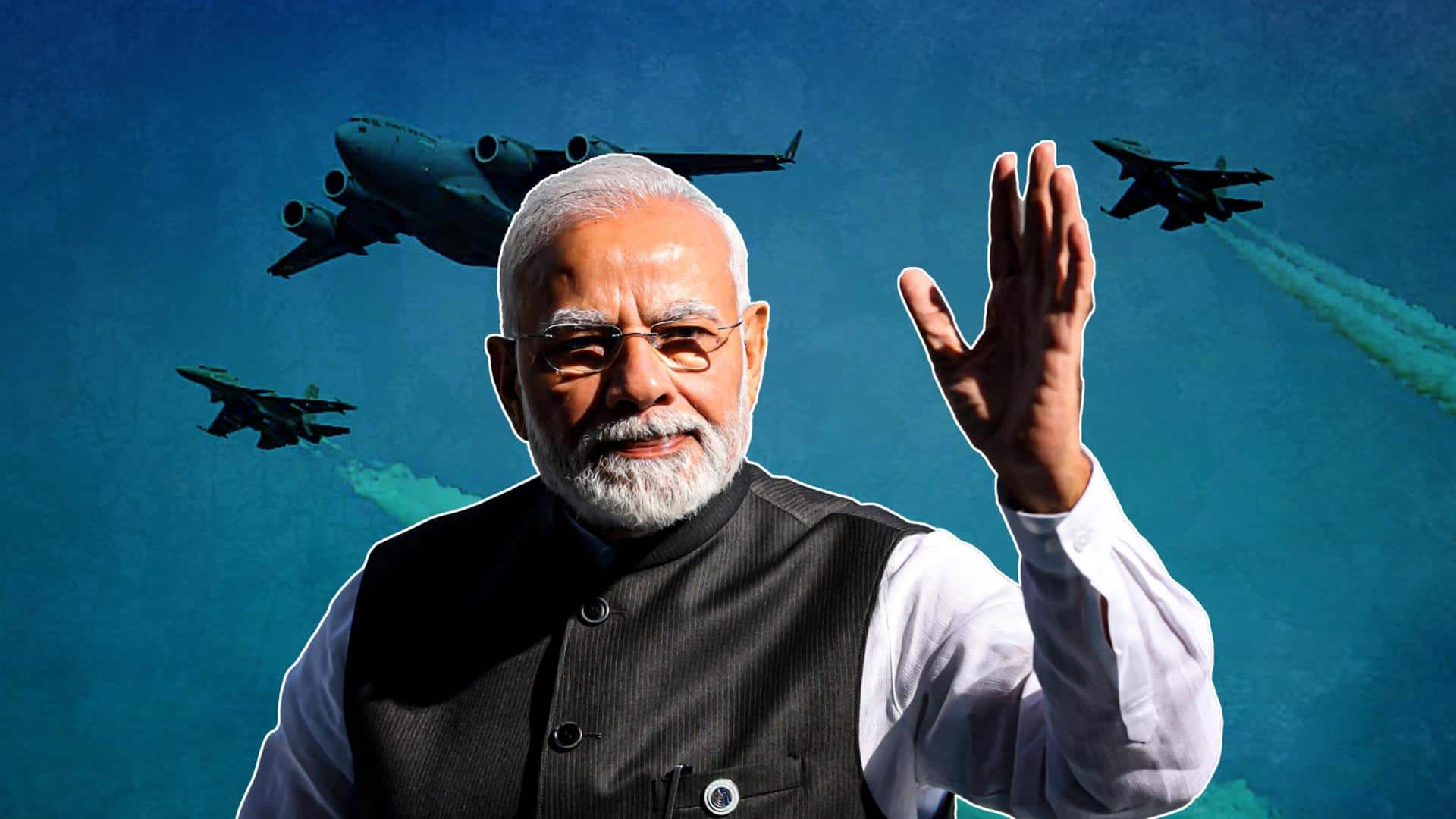
PM inaugurates Aero India-2023; says it reflects India's new strength
What's the story
Prime Minister Narendra Modi inaugurated the 14th edition of Aero India in Bengaluru on Monday. Billed as Asia's largest aero show, it will display India's indigenous equipment and innovations to visitors. He also pitched for private investment in India's defense sector exports. Notably, 809 companies from 98 countries are participating in the five-day event to demonstrate their aerospace and military advancement and capabilities.
Context
Why does this story matter?
The event comes months after a report said that PM Modi's "Make in India" initiative led to a weaponry shortage in defense forces. The Indian Air Force has inducted many indigenous aircraft lately, boosting the initiative. However, the decrease in foreign technology exchange has reportedly taken a toll on the forces. Notably, the program mandates 30-60% of domestically produced components for every military purchase.
Details
Nearly 100 countries participating; looking to forge partnership
According to a Defence Ministry statement, the five-day aerospace exhibition being held at the Yelahanka Air Force Station complex, Bengaluru, will showcase India as an emerging hub for manufacturing military aircraft, helicopters, equipment, and new-age avionics. Themed The Runway to a Billion Opportunities, Aero India 2023 will also focus on forging partnerships with foreign companies, as around 100 countries are participating.
Twitter Post
Watch: PM Modi addressing inaugural session of Aero India 2023
#AeroIndia2023
— TIMES NOW (@TimesNow) February 13, 2023
PM Narendra Modi today inaugurated Asia's largest aero show, Aero India 2023, in Bengaluru.
Our target is to reach 5 billion dollars worth of defense exports by 2025. I would encourage the private sector to invest in this area: PM Modi pic.twitter.com/Yhb9IWSu2R
Aero India
Aero India reflects new approach of New India: Modi
"Aero India reflects the new approach of New India. There was a time when it was considered just a show. In the past few years, the nation has changed this perception," Modi said at the event. "Today, it is not just a show but also India's strength. It focuses on the scope of the Indian defense industry and self-confidence," he added.
Exhibitors
These are top exhibitors at 5-day aero show
India Today reported that the major exhibitors in the event include local companies and foreign-based firms, such as Airbus, Boeing, Dassault Aviation, Lockheed Martin, Israel Aerospace Industry, BrahMos Aerospace, HC Robotics, Rolls Royce, Larsen & Toubro, Bharat Forge Limited, Hindustan Aeronautics Limited (HAL), among others. Nearly five lakh visitors are expected to attend the event physically, and millions of others virtually.
Aim
Aero India 2023 looking to promote indigenous equipment
The event intends to promote the export of indigenous aviation platforms such as the Light Combat Aircraft (LCA)-Tejas, HTT-40, Dornier Light Utility Helicopter (LUH), Light Combat Helicopter (LCH), and Advanced Light Helicopter (ALH). Earlier, Defence Minister Rajnath Singh stressed that Aero India 2023 would offer a renewed boost to the government's efforts to establish a world-class domestic defense sector under the Atmanirbhar Bharat initiative.
Twitter Post
Visuals of the aero show on Monday
Watch: Bengaluru hosts Asia's largest aero show#AeroIndia2023 pic.twitter.com/PaDV47pewU
— NDTV Videos (@ndtvvideos) February 13, 2023
Report
Shortage of weapons in defense forces: Report
According to a Bloomberg report published in September 2022, India's defense forces are "running out of weaponry" as a result of PM Modi's "Make in India" initiative. Quoting senior officials, it said India's desire for indigenous military system development has left it susceptible to Chinese and Pakistani threats. Experts have also suggested that the policy's slow pace may have impacted India's military systems.
More details
'India may fall short of helicopters and fighter jets soon'
According to the report, the "Make in India" policy doesn't permit the Indian air force, army, and navy to import a few critical weapons anymore. Officials had said this may leave India short of helicopters by 2026 and fighter jets by 2030. For every military purchase, the program mandates 30-60% of domestically produced components. These caps, and the import block, didn't exist earlier.